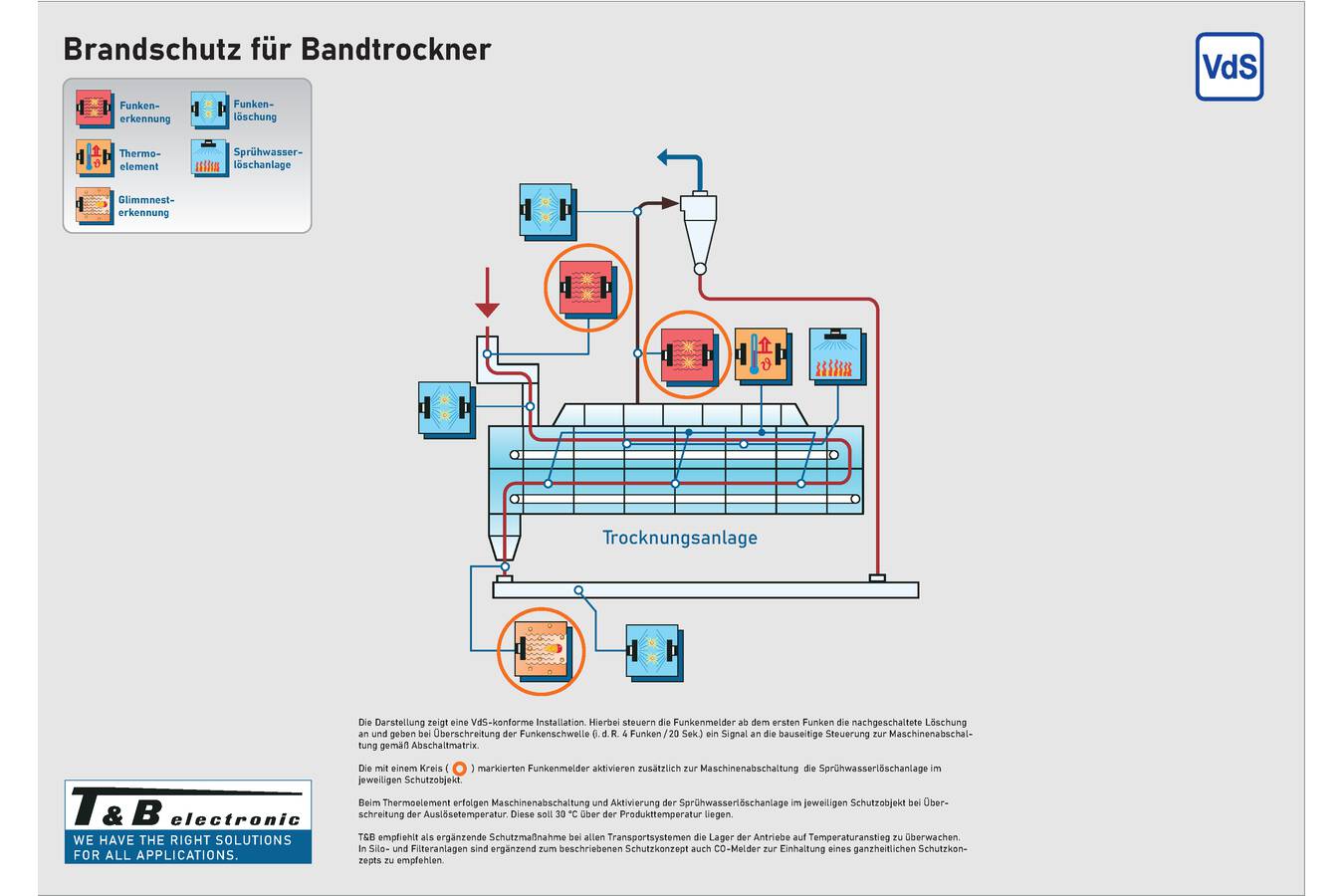VdS-certified fire protection concept for belt dryers
For the first time, T&B is preparing a certified protection concept in cooperation with VdS The drying of materials is often the prerequisite for their further processing. The drying process, i.e. the thermal removal of water and other liquids, makes the dried goods durable, mixable, grindable or otherwise usable for further process steps.
Drying processes have been industrial standard for many decades already. The first belt dryer in Europe, for example, went into operation as long ago as 1907. These days, belt dryers are used in a wide range of different branches. Examples include belt dryers for timber, pharmaceuticals, food, plastics, wastewater sludge and many other organic substances. All these substances have one thing in common: they are combustible and, in combination with a belt dryer, result in a high fire load.
The importance of belt dryers in industrial applications has increased significantly over the past few years. Generally, standard series belt dryers have a modular design. They are made up of a product feeding module, a drying module



